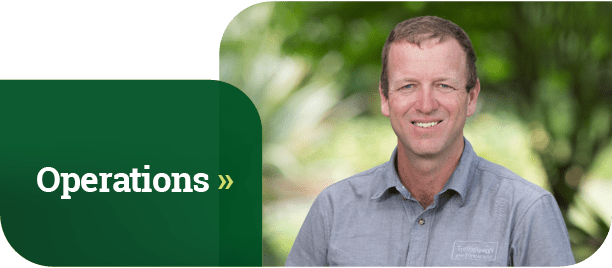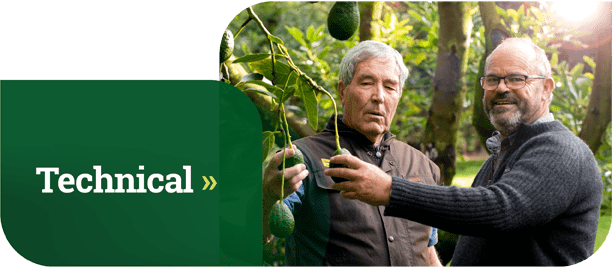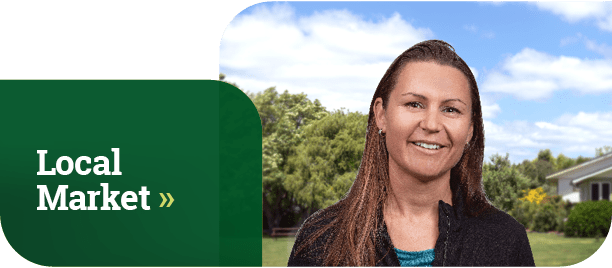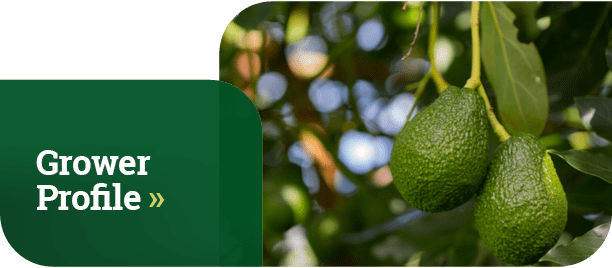eNews Avocado 4th Quarter, December 2022
Daniel Birnie
Head of Avocado
As I write this in mid-December, the rain continues to fall, orchards are wet and the harvest is challenging. The local market is showing signs of life, however, it’s off a low base due to the lowest packouts we have seen in a long time. This comes off an extremely challenging 2021/22 season, where we saw the lowest returns that growers have ever received. Interest rates are also rising, and we are not sure when that will slow. At Trevelyan’s we keep track of how many of our growers have their orchard on the market, typically it’s around two or three orchards, at the moment it’s 18.
Sometimes it’s hard to see where the sunshine is, both in the sky and into the future.
A recent webinar I viewed (which was also distributed by James in his Week That Was), illustrated some interesting points about avocados worldwide.
Between 2011/2012 and 2020/2021, avocado trade worldwide increased by 2.5 times, 12% per annum (compared with fruit trade of 2%). Along with this, however, there have been significant social and environmental side effects in other producing countries.
We have seen some of these side effects in Chile, where water was drawn from rivers to irrigate orchards, leaving downstream villages short of drinking water.
In Mexico earlier this year, exports to the USA were temporarily halted due to a threat to a USDA official. In 2020, a US official was also killed while conducting fruit fly inspections. The avocado industry there is clouded by the possible involvement of cartels and it’s one of the reasons NZ won the right to hold the avocado world congress ahead of Mexico.
In Taiwan last year a shipment of Californian avocados was seized and destroyed due to elevated levels of the heavy metal cadmium.
Reflecting on these wider issues faced by some of our competitors in the market, we are fortunate to be able to grow avocados in a socially and environmentally friendly way.
Our industry systems are robust enough to ensure we can send safe fruit to our increasingly diverse markets overseas, what we need now is for those systems to be recognised and demanded by the countries we supply to. As consumers demand safer food that is grown in a considerate manner, will that be a competitive advantage for our growers? We hope so.
In the meantime, I hope the sunshine returns in January and we can finish harvesting this crop and prepare for next season.
Katherine Bell
Grower Liaison Representative
Last month we held discussion groups in Opotiki, Coromandel and Katikati on the topic of water shoot management. These days were well attended and gave everyone a chance to improve their knowledge of the subject.
The discussion groups were held at both high-density and classic-spaced orchards. Below is a summary of the orchards we attended, some of their defining features and other discussions we had on the day:
Craig & Tammy Ramsay’s orchard:
- It’s a 5×3 spacing and includes 30-year-old previously stag-horned trees.
- We discussed the management of these older trees in a high-density orchard.
- The reason for keeping the older trees is to get back into fruit production more quickly.
- The plan is to hedgerow and keep these trees at 3.5m tall, allowing all the fruit to be picked from the ground.
- Predator Free BOP talked about rat, possum and stoat management. Key points around using both baits and traps were:
- Research your baits, as certain types make them thirsty. This can lead to chewed irrigation pipes.
- Look up your local pest library for renting out traps. Men’s shed in Katikati sell the traps for $50-$100 depending on the trap size.

Gert & Mies Harbers’ orchard:
- It’s a 7×7 spacing with 20-year-old trees.
- The orchard is humped and hollowed to help with water runoff and drainage throughout the orchard.
- It was heavily pruned last season, and the trees are being trained into hedgerows.
- There is a battle with the regrowth and the trees trying to form cathedrals over the hollows.
- We discussed the management of the regrowth to increase productivity by removing vertical growth down to a weak side-shoot. We also discussed the importance of keeping enough three and four-year-old wood for production.

Chevvy & Dianne Addison’s orchard:
- It’s an 8×4 spacing, where the trees range from two to four years old.
- The majority of the growers in attendance had high-density orchards around the same age or younger.
- We discussed the amount of pruning needed at each stage of the tree, focusing on:
- removing old flower panicles to promote growth,
- lifting the skirts of the trees to allow for weed control and,
- removing vertical growth to “walk” the branches out and create the hedgerow we want to end up with.

Jonathan Cutting
Avocado Technical Manager
Fruit set 2022
Flowering and initial fruit set are now done for another year. After a long and wet winter continuing into a spring interlaced with a few cold snaps, we had started to guess that fruit set was an unpredictable ask… and I guess we now have a very mixed bag! There are some wonderful fruit sets and plenty of fruit sets that are very average to poor. While there is a regional effect, there are so many exceptions that there appears to be no pattern to it – I know there is always a reason, we just don’t know what this one is.
This always brings the universal question from growers: “why is avocado fruit set so unpredictable and uncontrollable?”
Perhaps if we understand the underpinning avocado floral biology and the genetic drivers that regulate fruit set, we can try to “plug” some of the biological challenges and reduce fruit set failure risk. The link below is a good introduction to avocado floral biology and the synchronous nature of avocado flowering written 15-plus years ago. https://www.avocado.org.au/wp-content/uploads/2017/01/SGM-TRS-3-Flowering-PPT.pdf. This shows how timeless and universal this challenge is.
Let us look at floral biology and the conversion of flowers into fruit. The avocado is “shockingly” wasteful in that during a good fruit set, less than 0.5% (1 in 200) of flowers successfully pollinate, fertilize, develop and eventually become fruit. There are some other fruits that have a very poor conversion of flower to fruits, such as mango and olive, however, compare this to kiwifruit, stone and pome fruit or citrus where potentially every flower can become a fruit and fruit sets of 50% plus are not unusual. In fact, fruit thinning is the norm and fruit crop regulation is a significant input.
Why is avocado so different? Plain and simple, the evolutionary strategy of the avocado is to cross-pollinate. Consider some of the drivers, which include:
Temporal separation of the male and female phases of the flower.
The male and female phases of the flower open up on consecutive days – the female phase is the first active and, after a period of time (24-36 hours), the female parts (stigma and style) then wither and become non-receptive. The following day the male phase is active, and pollen is shed from the anthers. This is the key driver for cross- pollination in avocado. Israeli research found that in most cases, cross-pollinated flowers have a higher chance of setting fruit than close-pollinated flowers (Hass pollen) and it is also probable that a cross-pollen grain would outdo self-grains while competing for fertilisation. These effects are termed ‘partial self-incompatibility’. In addition, the cross-pollinated fruits outdo the self-pollinated fruit remaining on the tree and, upon maturation, the cross-pollinated fruits are more persistent, usually heavier and contain a larger seed than the self-pollinated fruits.
A and B type flowering so that the male and female phases of the same cultivar do not overlap.
There are two classes of flowering types in avocados, termed A and B. Each cultivar falls into one of the classes. Within each class, the male and female phases of flowering occur at different times of the day, for example, a morning female flowering phase is followed by a male flowering phase the following afternoon. This is why we use pollinizer cultivars like Zutano, Ettinger and Edranol in Hass orchards.
The need for an insect vector.
An insect vector is required to move pollen from a flower in the male phase (shedding pollen) onto a receptive stigma of a flower in the female phase. The avocado flower in the female phase carries relatively large amounts of easily accessible nectar and, in the male phase, pollen. Therefore the avocado flower is attractive to most insect types. It is mainly attractive to, and well adapted for, small-to-medium sized bees and wasps, which serve as its main pollinators. There are many theories, speculations and anecdotal observations around which insects (flies, bees, mirids, bumblebees, flower thrips, etc.) can and do pollinate avocado, however, exclusion trials conducted in Florida (where avocado trees were caged using insect-proof materials and then a specific insect introduced), have identified the honeybee as the primary insect to successfully pollinate avocado.
Temperature sensitivity.
Avocado pollination and fertilisation is temperature dependent and there are several fertilisation / fruit set models that are all temperature driven. Fruit set becomes more of a challenge when the avocado is grown in subtropical or warm, temperate environments. This becomes a frustration when most other aspects of avocado physiology appear to be environmentally “plastic” or adaptable, for example, the tree grows well in cool climates or deserts and can tolerate light frosts, but fails to reliably set fruit!
Integument failure.
Israeli research carried out some years ago found that integument (the early stage of seed coat development) failure occurred when starch (energy) levels in the flower panicle were low. This is the key reason we try to maintain leaf functionality through winter and spring.
Pollen grain synergism.
This is the phenomenon when a single ovule fruit like avocado requires many pollen grains to fertilise successfully. Israeli research has shown that at least 20 grains of pollen are required to be deposited on the stigma to ensure successful pollen tube growth. This is only achieved with multiple bee visits in a very short period of time (2-3 hours).
High rate of reproductive material selection.
Under commercial orchard conditions, only a low percentage of flowers set fruit and only a small number of these fruits persist on the tree to harvest. The tree carries hundreds of fruits, perhaps up to a few thousand in very old, large trees – which is less than 0.5% of the flowers. This makes fruit drop very stress sensitive, and even moderate stress (humidity, temperature, energy, wind, etc) can cause significant fruit drop.
Vegetative to reproductive “balance”.
This is an area that has intrigued and baffled avocado researchers and academics for many years. Some phenological charts of avocado growing events have described “ON” and “OFF” years using a two-year chart. Heavy fruit sets are characterized by lighter subsequent vegetative growth, followed by lighter flowering and poor fruit set, resulting in an OFF year. The “alternate bearing” bearing nature has been described many times in the global literature. The key physiological drivers remain elusive, but the observation is that, in most cases, the OFF year comes first, normally precipitated by an adverse weather event such as a heavy frost. The ON/ OFF cycle then tends to amplify over time.
There are two types of vegetative shoots, sylleptic and proleptic, and both can flower and set fruit.
The main difference is that sylleptic shoots are side shoots that grow at the same time as the main shoot and generally (more than 90% of the time) are determinate (have no terminal vegetative bud in the flower panicle). Proleptic shoots are subtended by a bud ring and do not grow at the same time as sylleptic shoots. Clusters of fruit are typically carried on the previous season’s sylleptic shoots. The key observation supporting the reproductive vegetative competition theory is the amount of fruit set on sylleptic shoots, which are predominantly determinate, and therefore provide no competition with vegetative growth.
Metaxenia – my favourite! This is a phenomenon where the pollen, rather than the gamete, influences the physical attributes of the maternal tissue, specifically the ovary. In the avocado, this manifests as match heads (prior to then shedding), where pollen lands on the stigma, pollen tube growth begins and chemical signaling occurs between the pollen tube and the ovary, but fertilisation does not occur. The ovary starts to develop (the match head), but then the tree “realizes”, driven by hormonal signaling that the ovary was not fertilized. In this circumstance pollination occurred, but fertilisation failed. The fruitlet started to grow due to the metaxenia effect and was then shed from the tree.
In summary, we are dealing with a tree where the genetic default fruit set position, on an individual flower base, is to fail with less than 1 in 200 flowers progressing to fruit! The best we can do is to work with the genetic situation and minimise detrimental climatic effects.
What does this look like?
- Plant pollinizer cultivars and space them for maximum effectiveness.
- Minimise the shaded canopy so that bees can do their work in the morning, between nine and midday, when the Hass avocado flower is in the female phase (or meant to be…. Low night temperature does impact the timing of the flower phases).
- Supply sufficient bees to make sure flowers get visited multiple times and deposit sufficient pollen on the stigma – pollen tube growth competition is very important for fertilisation. A rule of thumb is four bees per M2 of canopy when Hass flowers are in the female phase.
- Provide shelter so that the bees can fly even in moderately windy conditions.
- Select microclimates that carry minimal temperature risk during flowering.
- Alternatively, modify the microclimate so that the temperature fruit set risk is minimised, using shelter and row alignment for example.
- Keep the tree canopy in good condition through winter. Fruit set, cell division and early fruit growth all require considerable metabolic energy. Having leaves that can contribute to this energy demand is important. Avoiding premature leaf defoliation is essential. This includes managing six spotted mite numbers, keeping Phytophthora root rot at bay and optimizing tree nutrition. Avoiding frosting is a combination of good site selection and luck, however frost damaged leaves are also a complication.
- Avoid all biotic and abiotic stresses during and shortly after flowering.
- Prune to keep an open canopy and regulate cropping. This includes a combination of flower and water shoot management pruning. Maximising the percentage of the fully illuminated canopy increases starch storage.
There are no simple answers to ensuring fruit set. The science backs a strategy of “risk minimization”. This is based upon not “cutting corners” or neglecting certain inputs and ensuring that we do everything to help the avocado tree overcome its genetic “fruitlet culling” physiology (the technical term is a reproductive material selection). This approach will maximise fruit set when environmental conditions are not quite suitable.

Figure 1. Flower panicle with no fruit set
Have a happy and peaceful Christmas and festive season. I look forward to catching up with you all in 2023.
Jonathan Cutting.
Zara Marra
Local Market Manager
Local Market Update
The domestic market has packed 2.1 million Tray Equivalent (TE) this season (June – December), with BayFarms contributing 8% of the volume.
It has been a trying season. Retailers have been spoilt for choice, resulting in continuous downward pressure on values, however, careful management and consistent engagement with key markets have resulted in stable demand despite the large volumes. November’s wet weather resulted in a 20% reduction in domestic volume compared to the previous month, allowing the excess supply volume to clear and lift returns to a more sustainable level in early December.
The export Class 2 programme via AVOCO started early November. BayFarms is 56% of the way through the programme, with a target of 1000 TE per week.
We expect BayFarms to market large volumes for what remains of December and January. Export is 62% through, with 6 weeks to complete. With lower packouts and more volume falling into domestic, the ‘chip to this guac’ will be the warm weather and the summer BBQ.
Industry volume vs BayFarms returns for the last two seasons


If you are looking for a new Christmas – avocado chocolate truffles, please click HERE
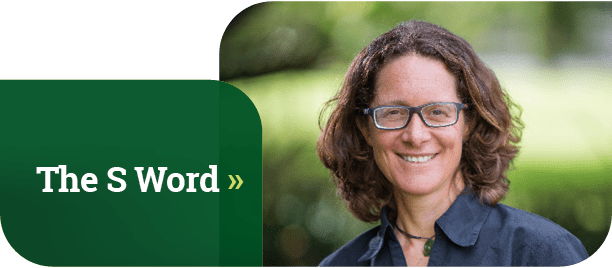
Sarah Lei
Head of Sustainability
Be a Force for Good
As the year draws to a close, it is a good time to reflect on how far we have come this year, both in our sustainability efforts and at Trevelyan’s as a whole. Despite our challenges this year, including labour shortages and fruit quality, we have continued with our sustainability journey and made efforts to help guide others on their own path to do more good. For me, some of the 2022 highlights are as follows.
Reduced waste to landfill

We have continued our efforts to reduce the amount of waste we send to landfill. At the end of November, we were sitting at 4.62% which is a testament to the efforts of everyone on site to help divert more material to recycling and compost.
Support our local community


We continued to support our local community, gifting over $65,000 of sponsorship towards local schools, sports clubs, and events. It is such a privilege to be able to support so many great people doing awesome things, just one of the (many) highlights here was supporting the Te Puke Tai Mitchells Girls Rugby Team who went on to win their tournament!
Showcasing Sustainability
As we emerged from COVID-19 restrictions and lockdowns, we were able to connect with others once again. We were able to invite visitors to our site to share what we do, and also to attend events. Some of these included:

-Sustainability presentation at the NZ Vet Club Conference
-Climate Change and Collaboration discussion panel at Green Drinks
-Sustainability tour for 25 staff from Kiwifruit Breeding Centre and Plant and Food
-Visit from 30 up-and-coming Rural Leaders
We also took the opportunity to visit some of our key suppliers and waste organisations that we work with. Some of these included:
-Sustainability group visit to the OJI site at Kinleith
-Sustainability trip to Auckland to visit Miltek, Critical, Future Post and Green Gorilla
-Reciprocal sustainability visits to our G4 partners’ sites in Te Puke
Finally, I’d like to wish everyone a very Merry Christmas and a Happy New Year. If you are stuck for Christmas ideas and you would like be a force for good, check out this gift guide from the Sustainable Business Network.
Nigel McPherson
Where are you based and how long have you been growing avocados?
We are on SH33, 5kms from Paengaroa.
In 2019, in partnership with Andrew and Jackie Siemelink, we purchased the property and have just harvested our 3rd crop.
Linda and I manage the orchard.
What do you enjoy most about growing avocados?
When we purchased the orchard, it had not set a crop for that year, so the biggest challenge has been getting the trees to regularly give us a crop. It has been really satisfying to see the tree health improve and get the orchard pruned and in better condition, an ongoing process.
What has been the biggest challenge for you as a grower?
I have found the biggest challenge with avo trees is pruning.
I go to all the Field Days and constantly ask questions of those that have been in the industry longer. They all tell you something that works for them, which is great, and all the suggestions usually lead to the same result in the end, but being brave and cutting enough wood off is difficult, especially when the trees had not been pruned in many years, like our orchard was.
Can you tell us a little bit about your history?
Linda and I both grew up as townies and, after we got married, we went into dairy farming. It was a great lifestyle in which to raise our two sons. After selling our farm, we opened the Sportsworld Store in Te Puke. It was a great business for us as we had been involved in playing and management in a variety of sports. We decided that 15 years in retail was enough, and this opportunity came along, so here we are.
What do you do in your spare time – do you have any hobbies?
Golfing and fishing are the sports of choice these days and the orchard is like a hobby as I have always enjoyed gardening, this is just on a much larger scale, so a fair bit of time is spent there.
Where do you see your orchard in 10 years’ time?
I hope the prices stabilise and we are able to step back, have a manager and just continue to do as much as I would like – as a hobby.
What’s an interesting fact most people don’t know about you?
I have been a regional representative across numerous summer and winter sports.
Nigel is a grower with Trevelyan’s and also a director on TAGL.


As you can see in the photo Nigel is actively facing the challenge of pruning and has made a good start already.
Rebecca Gibson-Lab Administator

Tell us a bit about yourself and your background?
I’m Rebecca Gibson and I was born and raised in Te Puke.
I started out as a veterinarian due to a desire to own a horse stud farm and being practical, thought this would keep my vet bills down. Reality quickly kicked in. I realised I was not going to make the millions required as a vet and grew out of my teenage horse crush stage, so I moved on to working for Fonterra and Tomra and fell into production and logistics planning.
What attracted you to working at Trevelyan’s?
Trevelyan’s has a reputation as a great place to work. It is also a short commute which is a massive bonus. More time living and less time sitting in traffic.
What is your role and what does it involve?
I started as the Lab Administrator on Halloween this year (hopefully that is a positive sign). I process the CTP’s and enter data into Trevelyans database (portal). I also get to update maps and prep the counts team data sheets as well as lots of other jobs to support the lab.
When you’re not at work what do you like to do?
I’m a massive Lego enthusiast and have taken over a whole room to hold them all. Luckily, I have a niece that is mad about Lego too. I love it when both my nieces come to stay, as it turns into a movie and Lego party, even if it means I get relegated to finding the Lego pieces and don’t get to actually build any of my new sets and we watch turning red for the 12th time.

